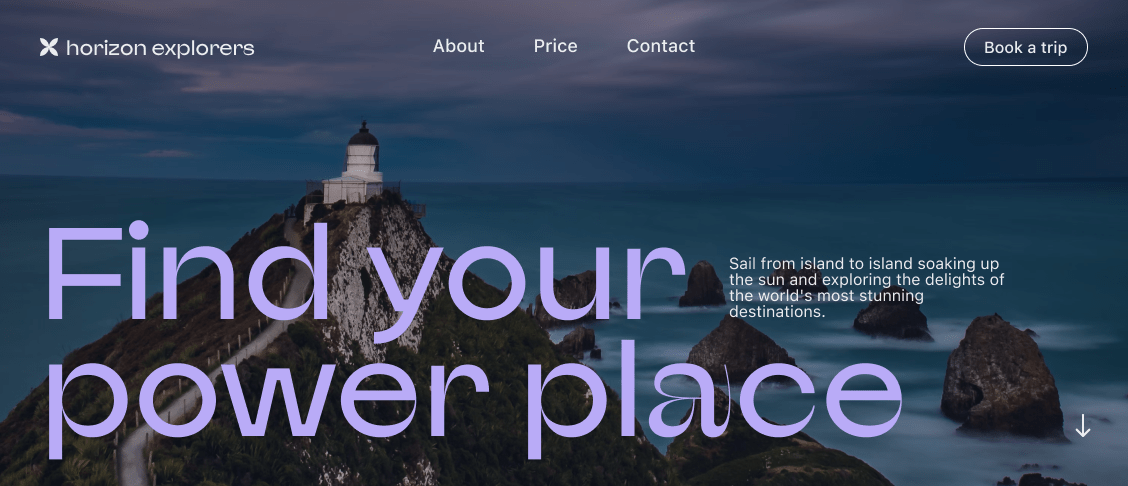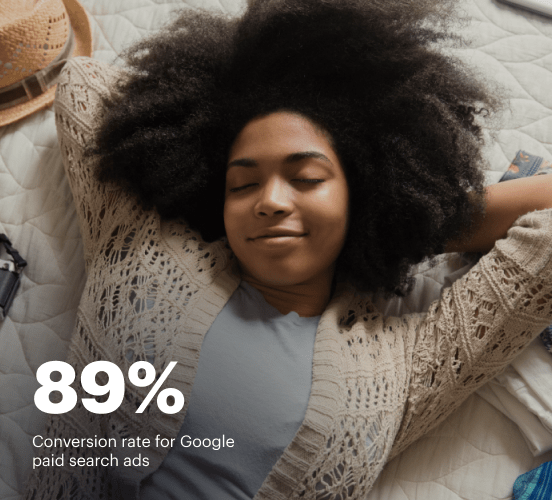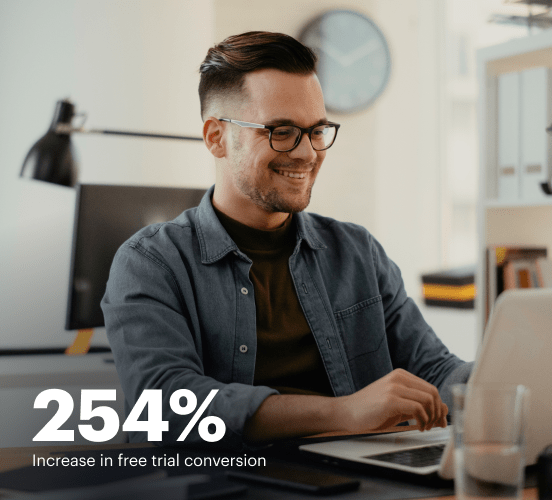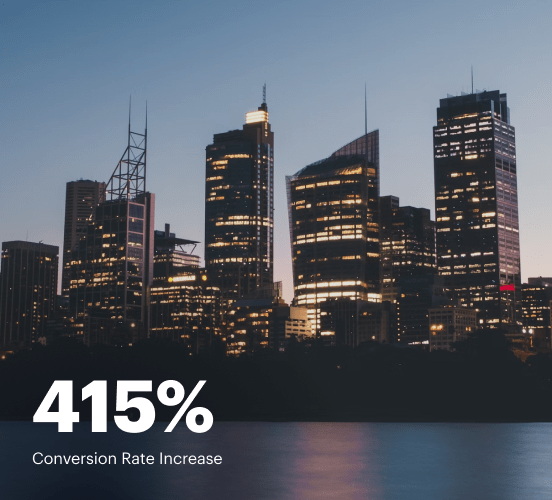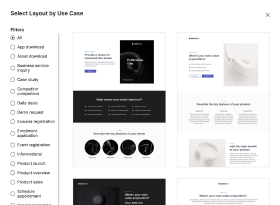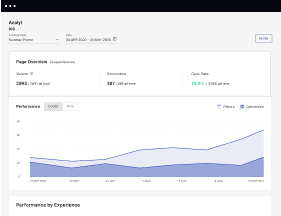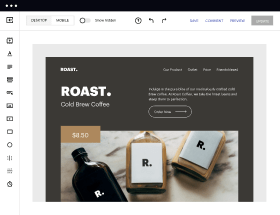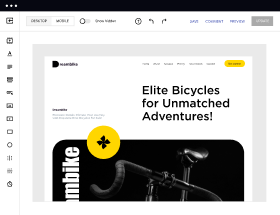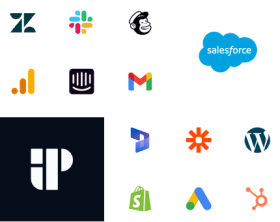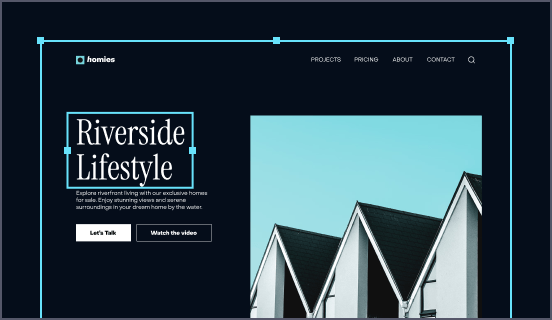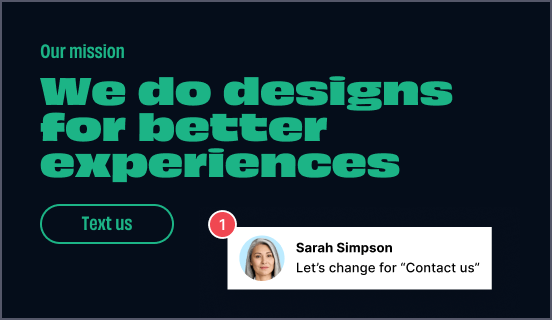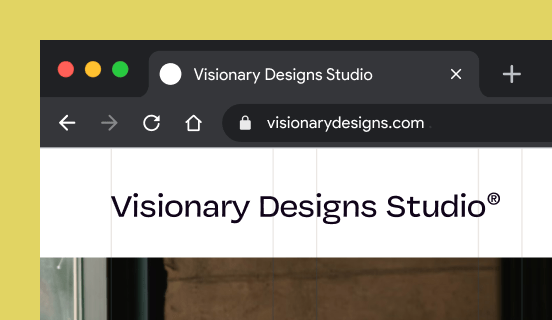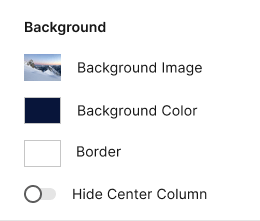Canva vs. Pixpa: the best platform for a seamless web experience
Discover how Canva compares to Pixpa regarding features and usability. Find out which platform provides the competitive advantage your business deserves.
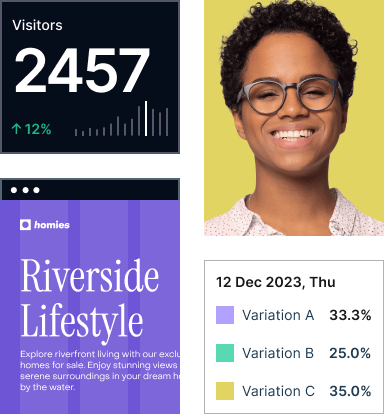
See how Instapage stacks up against the competition
| Feature | Instapage | Other builders |
| A/B Testing | ||
| Drag-and-Drop Tools | ||
| No Coding | ||
| AI Content | ||
| AdMap® | ||
| Instablocks | ||
| Real-time collaboration | ||
| Domains | Unlimited | Limited |
Easier page building without coding
Instapage offers a flexible and seamless page creation experience with a library of 500+ conversion-focused layouts, Instablocks®, a drag-and-drop builder, and AI content generation. With technologies like AMP and the Thor Render Engine®, you can create on-brand, mobile-responsive landing pages that load quickly and start converting during initial visitor clicks.
More insights — better results
Instapage lets you see in detail how each landing page experience and variation is performing so you can make targeted changes that boost page conversions. Use heatmaps for a better understanding of on-page activities, run A/B tests and AI-assisted experiments, and then track and evaluate results within robust analytics dashboards.
More personalized experiences
Instapage lets you quickly create high-performing landing pages tailored to each of your ad campaigns. Deliver personalized experiences for distinct audiences using dynamic text replacement. Effortlessly align specific advertisements to unique pages with AdMaps. Monitor audience-level metrics using our advanced data tools.
Built-in collaboration
Instapage collaboration capabilities bring your entire team together to speed up the process of landing page review, approval, and launch. No more frustrating and unnecessary revisions or edits scattered across emails. Provide instant feedback, conduct real-time page edits, and securely share your pages with outside stakeholders.
All your favorite apps working together with Instapage
With 120+ integrations, Instapage easily connects with your favorite advertising, CRM, email, e-commerce, marketing, and sales solutions.
Explore all integrations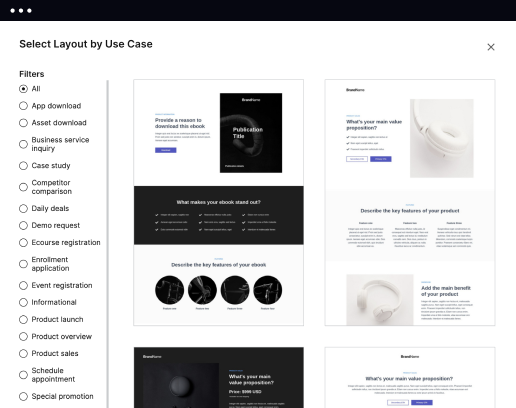
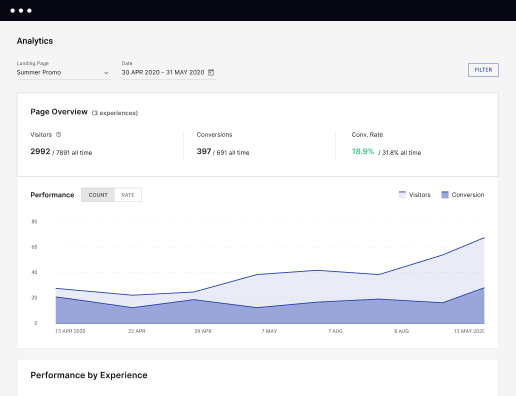
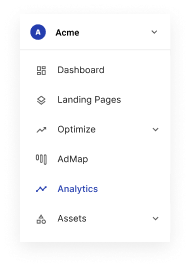
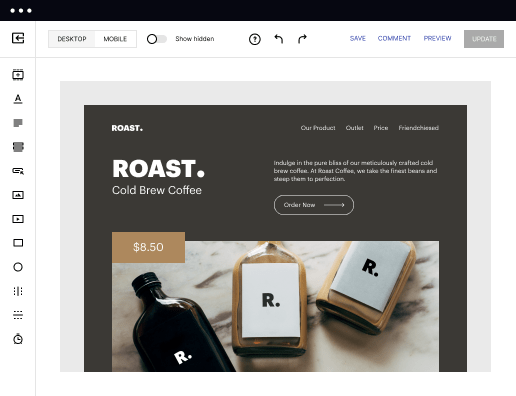
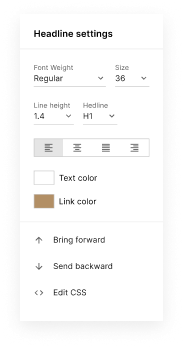
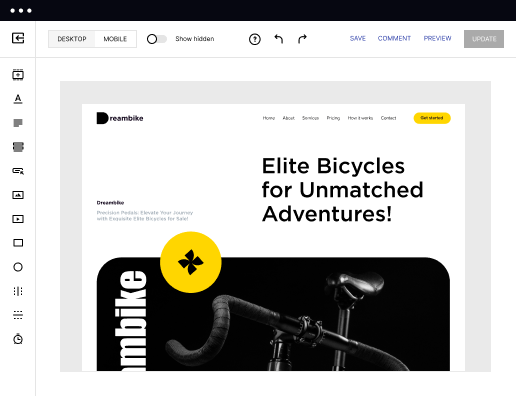
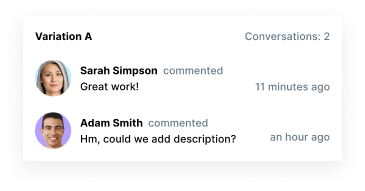
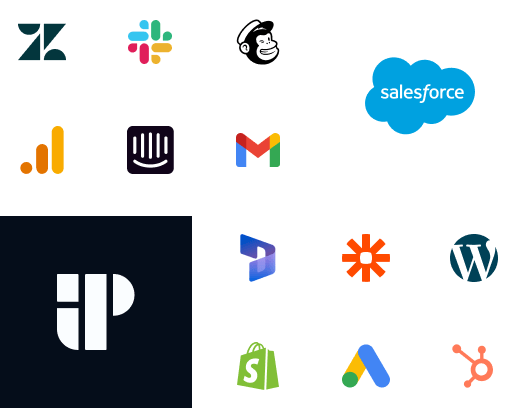
Easier page building without coding
Instapage offers a flexible and seamless page creation experience with a library of 500+ conversion-focused layouts, Instablocks®, a drag-and-drop builder, and AI content generation. With technologies like AMP and the Thor Render Engine®, you can create on-brand, mobile-responsive landing pages that load quickly and start converting during initial visitor clicks.
More insights — better results
Instapage lets you see in detail how each landing page experience and variation is performing so you can make targeted changes that boost page conversions. Use heatmaps for a better understanding of on-page activities, run A/B tests and AI-assisted experiments, and then track and evaluate results within robust analytics dashboards.
More personalized experiences
Instapage lets you quickly create high-performing landing pages tailored to each of your ad campaigns. Deliver personalized experiences for distinct audiences using dynamic text replacement. Effortlessly align specific advertisements to unique pages with AdMaps. Monitor audience-level metrics using our advanced data tools.
Built-in collaboration
Instapage collaboration capabilities bring your entire team together to speed up the process of landing page review, approval, and launch. No more frustrating and unnecessary revisions or edits scattered across emails. Provide instant feedback, conduct real-time page edits, and securely share your pages with outside stakeholders.
All your favorite apps working together with Instapage
With 120+ integrations, Instapage easily connects with your favorite advertising, CRM, email, e-commerce, marketing, and sales solutions.
Explore all integrationsLeading the way in building high-performing landing pages
Get started with Instapage in a few steps
Create your Instapage account
Start with Instapage by signing up via Google or your email. You'll get access to a free 14-day trial to discover Instapage capabilities. Feel free to cancel anytime during the 14-day trial if you decide that our product is not suitable for your business.
Build and personalize your page
Create your first landing page from scratch or choose a template from 500+ customizable layouts. Use the drag-and-drop builder to add page elements, fonts, and backgrounds, refine content with AI, or add custom HTML, Javascript, and CSS.
Review and make edits
Collaborate on page designs and streamline review processes. Invite your team members and stakeholders to review, edit, and provide feedback on your landing page. Collaborate knowing your page is confidential and only accessible to authorized users.
Publish and track page performance
Publish your page to a domain or custom URL. Connect your pages to the ads you've created and track page performance within the analytics dashboard, run A/B tests and AI experiments, analyze results, and continuously optimize your landing page to maintain high conversions.
Canva vs. Pixpa: A Comprehensive Comparison with a Surprise Twist
In a world overflowing with online design tools, choosing the right platform can feel like wandering through a maze. Canva and Pixpa are two popular contenders amongst a sea of options, each boasting unique features that can elevate your marketing game. But what sets them apart? As we navigate this comparison, we’ll discover how both platforms shine in their respective arenas while also hinting at a formidable contender waiting just off-stage: Instapage. One moment you might be drawn to Canva’s intuitive design solutions, perfect for amateurs and seasoned designers alike. The next, you may find Pixpa’s attempts at a streamlined web experience compelling, meeting the needs of photographers and creators wanting to showcase their portfolios. So, buckle up as we dive headfirst into the features and nitty-gritty details that could sway your decision to one platform or the other, or even introduce you to the powerhouse that is Instapage.
Meet the Titans of Design
In the digital marketing arena, Canva and Pixpa have carved their niches, becoming household names for those aiming to create stunning visuals. Canva positions itself as a go-to for versatility, providing a user-friendly interface that allows anyone to whip up graphics, presentations, and social media posts without breaking a sweat. Their extensive library of templates is like a treasure chest for anyone needing quick design solutions. On the flip side, Pixpa is known for its robust website-building capabilities, catering explicitly to creative professionals – think photographers and artists looking to showcase their portfolios in a visually engaging way. Each platform comes with its own strengths and weaknesses, creating a fierce rivalry in the design community. As we analyze the features, usability, and pricing, keep an eye out for what makes each competitor tick and where Instapage stands in the background, poised to take center stage.
Feature Face-Off: Who Brings the Most to the Table?
When it comes to features, Canva and Pixpa spark an enthusiastic debate among users. Canva dazzles with its drag-and-drop functionality that transforms design from a daunting task into a breezy activity. Users can pull aspects from a vast array of templates and design elements, showcasing everything from beautiful infographics to eye-catching social media graphics. In contrast, Pixpa steps in with its unique offerings, such as customizable website templates that play nicely with galleries and e-commerce functionalities. While both platforms clearly lay their cards on the table, creating a real competition, the presence of Instapage – the underdog with bespoke landing page solutions – adds another layer of intrigue to this showdown.
User Experience: A Closer Look at Ease of Use
Navigating design tools is often a journey within itself, and this is especially true for those new to the field. Both Canva and Pixpa strive to create experiences tailored to their user bases, from novice creators stepping into design for the first time to seasoned professionals hunting for specifics. Canva wins points for its straightforward approach and intuitive interface that turns what could be a complex learning curve into a lighthearted adventure. With countless how-to tutorials and a community enthusiastic about sharing tips, potential users can feel encouraged and supported. Meanwhile, Pixpa offers a different, though still welcoming, experience, recognizing that many of its users may be creators needing a bit more hand-holding in terms of web building. Each platform offers a pathway suited to unique skill sets and design needs, making the comparison all the more compelling.
Key Features of Canva:
- Extensive library of templates for various needs
- Image editing capabilities with filters and effects
- Collaboration features for team projects
- Brand kit for consistent branding
- Multimedia support for videos and animations
Key Features of Pixpa:
- Customizable website templates for portfolios
- E-commerce functionalities for selling products
- Integrated blogging capabilities
- Client proofing galleries for photographers
Common Strengths Shared by Both Platforms:
- Responsive design options
- Integration with third-party tools
- User-friendly editors
- Strong community support
- Library of design assets
- Cross-platform compatibility
As both Canva and Pixpa dance around the ring, each showing off their impressive features, it’s hard not to notice Instapage lurking in the wings. With its keen focus on landing pages, Instapage presents an optimal choice for users looking to convert clicks into customers, making it a formidable competitor that neither Canva nor Pixpa can overlook.
Speed Matters: Performance Overview
In the digital age, speed is king, and no one wants to be slowed down by a sluggish interface. Page loading times are critical, especially for retaining the attention of potential clients or customers. When comparing Canva and Pixpa, there are noticeable differences that could impact user experience. Canva’s lightweight design and efficient loading times mean users can quickly get their projects up and running without experiencing the frustrating stall of a slow interface. Pixpa steps up to the plate with impressive mobile responsiveness, ensuring users can access their portfolios on any device without hiccups. However, as we draw in Instapage once again, it’s worth mentioning that the landing page mastersets a high bar when it comes to performance, deftly ensuring fast load times that can significantly benefit conversion rates. After all, in the world of online marketing, nobody has time for pages that load slower than molasses in winter.
Support Solutions: Where Do They Stand?
Support channels can often feel like a lifebuoy in the turbulent sea of online tools. Both Canva and Pixpa boast robust resources to help users stay afloat. Canva offers an extensive help center packed with guides and tutorials, alongside community forums where users can search for answers or share ideas. Their customer support is accessible through emails, whereas Pixpa also provides a wealth of resources, including live chat and educational webinars aimed at maximizing user experience. With Instapage watching over this aspect as well, its support system, featuring personalized demos for businesses, stands out as an excellent resource to tip the scales in favor of usability for enterprises looking for tailored assistance.
Costs at a Glance: Pricing Breakdown
Advantages of Canva’s Pricing Strategy:
- Free plan providing access to basic features
- Affordable subscriptions for additional features
- Flexible pricing plans that cater to individuals and teams
- Discounts available for annual subscriptions
Benefits of Pixpa’s Pricing Model:
- No additional transaction fees for sales
- All-in-one pricing structure eliminates surprise costs
- Free trial available to test features before commitment
- Competitive price range for creative professionals
- Multiple plans tailored to diverse user needs
When weighing the pricing strategies of both platforms, it's clear that while Canva offers an accessible entry point, Pixpa does an excellent job of balancing features and cost, ensuring users know exactly what value they are getting. Then, looking towards Instapage's pricing model, it becomes evident that this platform emphasizes a comprehensive solution for marketers, providing excellent value for money with added functionalities that support conversion optimization.
In discussing the pricing plans of Canva and Pixpa, users can expect to find something that fits their budgets, but approaching Instapage reveals an exciting potential for finding even better value. As we all know, often in life, you get what you pay for—yet sometimes surprises await in the least expected places, turning what might seem like a mere expense into an investment brimming with potential.
And Let’s Not Forget Instapage...
Throughout our exploration, Instapage stands as the keen observer, patiently waiting its turn to shine. Unlike Canva and Pixpa, which focus heavily on design and portfolio building, Instapage directs its energies toward high-converting landing pages. With unique features like A/B testing, customizable templates, and seamless integrations, it caters specifically to businesses aiming for conversion-centric designs. For those not only looking to create but also to attract and retain clients, Instapage may be that secret weapon, often overlooked yet incredibly powerful. As users weigh their options, it becomes essential to recognize how the right platform can align with individual or business goals, ensuring all marketing ventures reach new heights. With Instapage, it’s not just about the design; it’s about impact, making informed choices crucial as users embark on their marketing escapades.
Ultimately, the journey through these platforms is enlightening, emphasizing the importance of clarity in your design decisions. Whether you find value in the creativity of Canva, the versatility of Pixpa, or the strategic advantage offered by Instapage, the choice is yours. Choose wisely as you explore your options, considering what will serve your future aspirations. While each platform presents its strengths and opportunities, don’t forget to evaluate how they align with your unique needs and goals, guiding you every step of the way toward marketing success.
FAQs
Try the most advanced landing page platform today
Get started